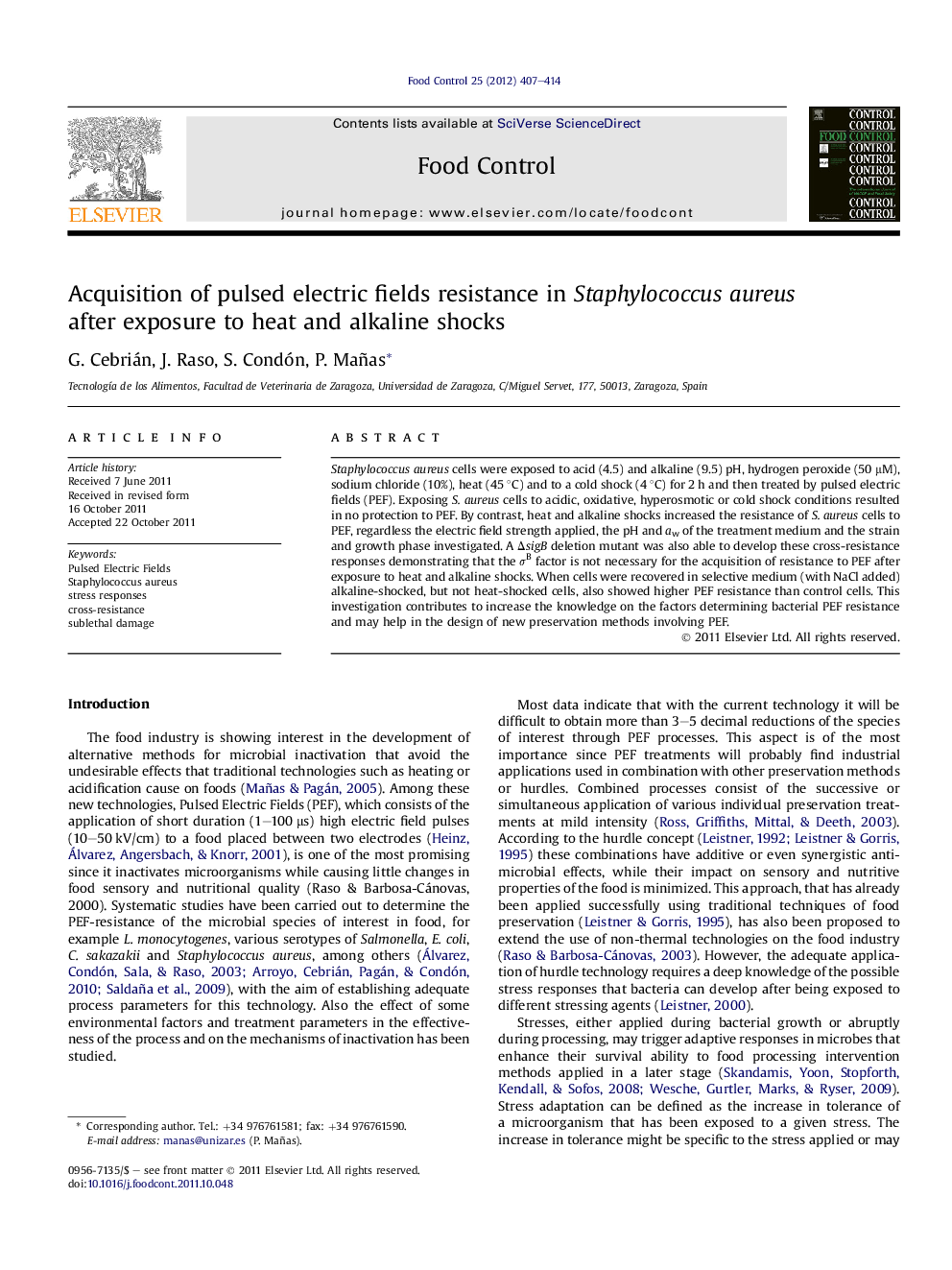| Article ID | Journal | Published Year | Pages | File Type |
|---|---|---|---|---|
| 6394167 | Food Control | 2012 | 8 Pages |
Abstract
Staphylococcus aureus cells were exposed to acid (4.5) and alkaline (9.5) pH, hydrogen peroxide (50 μM), sodium chloride (10%), heat (45 °C) and to a cold shock (4 °C) for 2 h and then treated by pulsed electric fields (PEF). Exposing S. aureus cells to acidic, oxidative, hyperosmotic or cold shock conditions resulted in no protection to PEF. By contrast, heat and alkaline shocks increased the resistance of S. aureus cells to PEF, regardless the electric field strength applied, the pH and aw of the treatment medium and the strain and growth phase investigated. A ÎsigB deletion mutant was also able to develop these cross-resistance responses demonstrating that the ÏB factor is not necessary for the acquisition of resistance to PEF after exposure to heat and alkaline shocks. When cells were recovered in selective medium (with NaCl added) alkaline-shocked, but not heat-shocked cells, also showed higher PEF resistance than control cells. This investigation contributes to increase the knowledge on the factors determining bacterial PEF resistance and may help in the design of new preservation methods involving PEF.
Keywords
Related Topics
Life Sciences
Agricultural and Biological Sciences
Food Science
Authors
G. Cebrián, J. Raso, S. Condón, P. Mañas,
